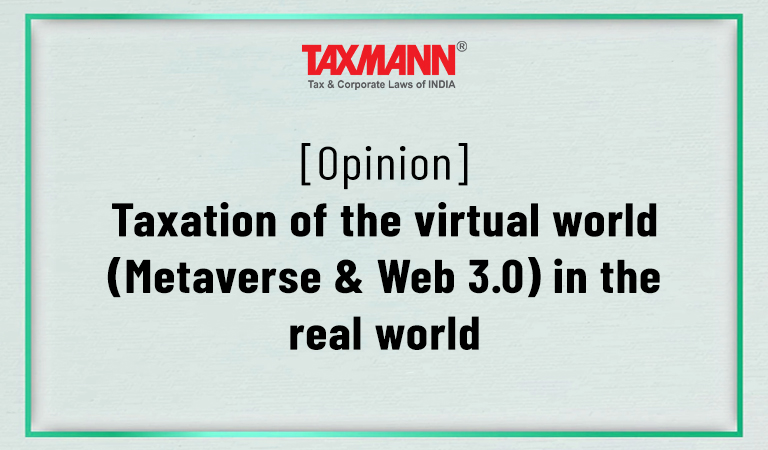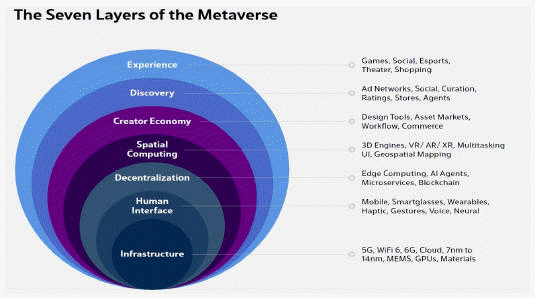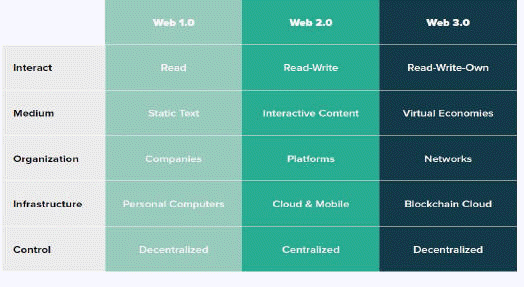[Opinion] Taxation of the virtual world (Metaverse & Web 3.0) in the real world
- Blog|News|Income Tax|
- 4 Min Read
- By Taxmann
- |
- Last Updated on 13 July, 2023

Navneet Singal – [2022] 145 taxmann.com 426 (Article)
I. Introduction
Satya Nadella, the CEO of Microsoft, has stated that,
“The metaverse is here, and it’s not only transforming how we see the world but how we participate in it – from the factory floor to the meeting room.”
The metaverse is probably one of the most controversial and intriguing topics these days. The buzz surrounding this single word is incredible. An estimated 2.62 million searches for the term ‘metaverse’ were made in October 2021, when Mark Zuckerberg announced the name-change of Facebook to Meta. The launch of Web 3.0 paved the way for the metaverse to evolve further. It’s now a place full of virtual worlds where we can meet friends, hold meetings, and shop.
“Vendors are already building ways for users to replicate their lives in digital worlds, from attending virtual classrooms to buying digital land and constructing virtual homes, these activities are currently being conducted in separate environments. Eventually, they will take place in a single environment – the metaverse – with multiple destinations across technologies and experiences.”
said Marty Resnick, research vice president at Gartner. Gartner Predicts that 25% of People Will Spend At Least One Hour Per Day in the Metaverse by 2026. According to Global Data estimates, the global metaverse development industry will grow from USD 22.79 billion in 2021 to USD 996.42 billion in 2030, at a CAGR of 39.8% from 2022 to 2030.
Taxation in the metaverse is a complex and emerging topic. Questions are beginning to emerge about the commercial potential of the metaverse. Questions like; will digital consumers pay tax on purchases from virtual stores? Will the admission to events held in the metaverse be subject to the same VAT treatment as physical events? Whether standard tax treatment can be applied to virtual reality.
The author attempted to analyse the taxation of Metaverse and Web 3.0 using various business scenarios in this article. Some of the key tax issues that the author has attempted to interpret are income characterization within the Metaverse, the evolution of tax principles in the virtual economy, the taxation of digital autonomous organizations (DAOs) and the applicability of the indirect tax on virtual transactions from an Indian and Global perspective.
II. What is Metaverse and Web 3.0?
The metaverse is a collective virtual shared space, created by the convergence of virtually enhanced physical and digital reality. It is persistent, providing enhanced immersive experiences, as well as device independent and accessible through any type of device, from tablets to head-mounted displays. Everything from human identity, personality, and reputation to assets, emotions, and history can be interacted with, controlled, and experienced in the virtual reality of the metaverse in entirely novel ways.
Zuckerberg has described it as a “virtual environment” that you can enter rather than simply view on a screen. Essentially, it’s a world of endless, interconnected virtual communities where people can meet, work, and play using virtual reality headsets, augmented reality glasses, smartphone apps, or other devices.
Metaverse venture capitalist and commentator Matthew Ball has attempted to identify the following five defining concepts of the metaverse, i.e.,
- A robust economy: the metaverse will likely incorporate future iterations of crypto, NFTs, and other block chain-based digital assets – all of which raise new tax challenges.
- Interoperability: rather than the walled gardens of Web2, the metaverse promises to offer a seamless and integrated experience, allowing individuals to move between platforms, retaining ownership of their identity, data, and assets.
- Persistence: the metaverse will never be reset and, in theory, never end.
- Synchronous and live:In the metaverse, “life” goes on whether or not a person is logged in.
- Uncapped users: There will be no limit to the number of people in the metaverse, and each person will have their own persistent identity.
Mr. Jon Radoff, a well-known author known for his metaverse research, has defined seven layers in the various stages of the metaverse market’s value chain. These layers can be depicted in the below diagram, i.e.,
 Web 3.0 is a more humanized version of internet applications and will provide spatial experiences comparable to those existing in the real world, by enabling decentralized interactions between users. With the enhancement of immersive experiences in the future, Web 3.0 may eventually blur the boundaries between the digital and physical worlds. This will be achieved through the confluence of enabling technologies such as, inter alia, Augmented Reality (“AR“), Virtual Reality (“VR“), Extended Reality (“XR“) Artificial Intelligence (“AI“), Internet of Things (“IoT“), advanced networking, i.e. 5G, blockchains and machine learning, etc.
Web 3.0 is a more humanized version of internet applications and will provide spatial experiences comparable to those existing in the real world, by enabling decentralized interactions between users. With the enhancement of immersive experiences in the future, Web 3.0 may eventually blur the boundaries between the digital and physical worlds. This will be achieved through the confluence of enabling technologies such as, inter alia, Augmented Reality (“AR“), Virtual Reality (“VR“), Extended Reality (“XR“) Artificial Intelligence (“AI“), Internet of Things (“IoT“), advanced networking, i.e. 5G, blockchains and machine learning, etc.
A comparison chart of Web 1.0, Web 2.0 and Web 3.0 can be described as below:

While Web 3.0 deals with sculpting the internet of the future, the Metaverse is all about how we will experience it.
Click Here To Read The Full Article
Disclaimer: The content/information published on the website is only for general information of the user and shall not be construed as legal advice. While the Taxmann has exercised reasonable efforts to ensure the veracity of information/content published, Taxmann shall be under no liability in any manner whatsoever for incorrect information, if any.

Taxmann Publications has a dedicated in-house Research & Editorial Team. This team consists of a team of Chartered Accountants, Company Secretaries, and Lawyers. This team works under the guidance and supervision of editor-in-chief Mr Rakesh Bhargava.
The Research and Editorial Team is responsible for developing reliable and accurate content for the readers. The team follows the six-sigma approach to achieve the benchmark of zero error in its publications and research platforms. The team ensures that the following publication guidelines are thoroughly followed while developing the content:
- The statutory material is obtained only from the authorized and reliable sources
- All the latest developments in the judicial and legislative fields are covered
- Prepare the analytical write-ups on current, controversial, and important issues to help the readers to understand the concept and its implications
- Every content published by Taxmann is complete, accurate and lucid
- All evidence-based statements are supported with proper reference to Section, Circular No., Notification No. or citations
- The golden rules of grammar, style and consistency are thoroughly followed
- Font and size that’s easy to read and remain consistent across all imprint and digital publications are applied




